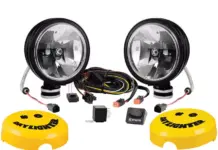In 2014, Standard & Poor’s Global FinLit Survey calculated financial literacy by measuring knowledge of risk diversification, inflation, numeracy and interest compounding. The result? Only 33% of adults worldwide were classed as financially literate. “Financial knowledge is especially important in times where increasingly complex financial products are easily available to a wide range of the population,” write survey authors Leora Klapper, Annamaria Lusardi and Peter van Oudheusden. They also explain the high costs of financial ignorance. A low level of financial literacy directly translates into spending more on transaction fees, incurring more debt, paying higher interest rates on loans, borrowing more and saving less.
Online Resources for Adults
There are so many online financial literacy resources for adults; perhaps the biggest challenge can be deciding which tools are best. My advice would be to seek out unbiased, well-known resources that summarise the fundamentals of financial literacy such as the well-known For Dummies financial literacy guide or Money Crashers. If you already know the fundamentals, you can follow blogs or podcasts that will expand your knowledge. Trusted websites such as Forbes regularly publish lists of the best financial literacy tools. For example, The Simple Dollar is a Forbes-recommended blog that offers advice on credit cards, loans, insurance, banking and investing. We’ve also built a great resource here that covers everything from saving for the future, to investing and even tips on how to recover after job loss.
Money Management AppsOften, the first step to financial literacy is understanding how you spend your money. After all, you can only set and achieve goals if you have a realistic idea of your finances. Free apps such as Wally and Spending Tracker make tracking income and expenditure quick and intuitive; Wally even allows users to take pictures of receipts instead of manually having to enter costs. Money management apps make it simpler to stick to a budget and also allow users to identify any spending issues; even seemingly small daily expenses can add up to a significant amount. For example, spending twenty dollars on a cup of coffee before work may seem like a small expense until you realise that by the end of the year you would have spent approximately $5,220 on coffee. A money management app can help you spot those little expenses that really add up.
Analysis
It is hard to figure out which online tools are actually beneficial due to the sheer amount. All make similar promises, but has there been a financial literacy tech that has proven itself and that consumers continue to use sustainably? This article also brings up the term financial ignorance where they “[spend] more on transaction fees, incurring more debt, paying higher interest rates on loans, borrowing more and saving less.” Which is an interesting angle where they are looking at the ignorance in certain areas whereas other sources I have seen just talk about the ways to make people more literate.



